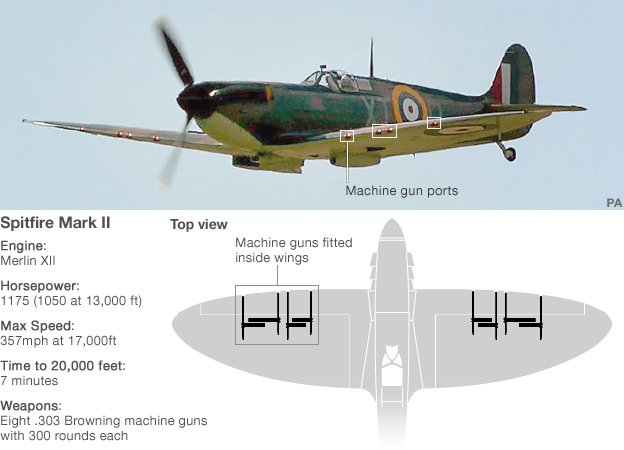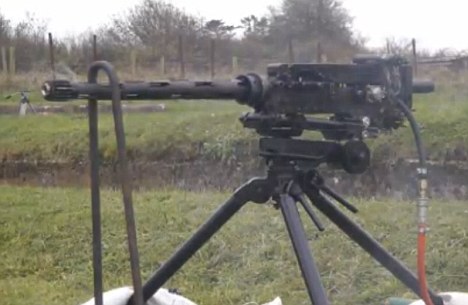Six Browning machine guns have been discovered in 2011 buried near the Irish site of a 1941 Spitfire crash. Having been covered in peat for seventy years now, there is some question as to whether or not they are operational. Now it is believed that if the buried guns are not currently able to fire, they can be fixed so that they are.
In 1941, American Spitfire pilot Roland Wolfe’s engines failed while he was flying over the Irish Republic. Wolfe was able to deploy his parachute and land safely, but his aircraft crashed into the bog where it remained buried for seven decades. Those involved in the plane’s excavation had been hoping for the aircraft to be somewhat pristine, and they were more than a little surprised that not just one of the Spitfire’s guns was intact, but six of them with several rounds left.
Although the wreck had been bad, the Spitfire was preserved better than anyone could have anticipated, still bearing its paint designs and ID number. Even the rear tires had not gone flat. While preservation of the buried relics was top priority, Lt Colonel Dave Sexton had other ideas. He was the one who persuaded authorities to try and fire the guns to see if they would still work.

The guns were cleaned as best as possible to remove the peat by which they had been buried. Specialists from Ireland assembled one strong gun from the most functional parts of all six to optimize their chances for success. They decided to fire the guns remotely for the sake of safety, having guest operator Dan Snow sit in a trench with safety gear on. As he rotated the crank on the firing mechanism, Snow felt joy at the discovery that the Browning machine guns, from the Spitfire that had been buried for at least 70 years, worked as cleanly as ever.
This achievement is especially spectacular when taking into consideration the vast number of weapons being manufactured around the same time as the Spitfire guns. One manufacturer called Birmingham Small Arms made almost 500,000 such guns, and they were only one of several firms creating weaponry for the Allies, the BBC News reports.
Having uncovered the buried Spitfire and its guns was but one accomplishment. Finding out that they still worked was what truly made the excavation a success. Having now confirmed the quality of wartime engineering in the UK, the guns need never fire again. They will be put on display in the town of Londonderry, and as is apt considering their ability to fire after a crash and seventy years underground, the display is expected to be permanent.
https://www.youtube.com/watch?v=0PjLpqWFFEo
//
